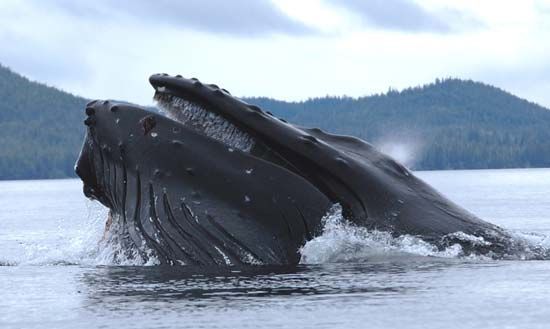What Do Whales Eat?
- Related Topics:
- whale
- baleen whale
- toothed whale
Whales have a diverse diet that varies significantly between species, primarily depending on whether they are baleen or toothed whales.
Baleen whales, such as the blue whale and humpback whale, are filter feeders. They take in large mouthfuls of water and then use their baleen plates to trap small marine organisms. These plates are long, comb-like structures made of keratin and hang in rows from the roof of the mouth. Bristly edges on the inside of each plate help to catch food while letting water flow back out. Baleen whales mostly eat small crustaceans, such as krill and copepods, plankton, and small fish.
Toothed whales, such as sperm whales and killer whales, feed in a different way. They are active hunters and use their teeth to catch individual prey. Their diet is more varied and can include fish, squid, and even larger marine animals. Sperm whales are known to dive deep into the ocean to hunt giant squid. Killer whales have been seen hunting seals and even other whales.
Some whales have developed special ways to catch food. Humpback whales use a technique called bubble netting. They blow bubbles in a circle to trap their prey in one place, which makes it easier to catch large amounts of food at once. This method is often carried out by a group of whales working together: one whale blows the bubbles, another calls out to signal the group, and others swim upward through the trapped fish with their mouths open. This cooperative feeding strategy shows how smart and adaptable these marine giants can be.


















